Wearable device market overview with a brief historical background
Devices that were once beyond the limits of science fiction, and which only special agents from the coolest fighters had in their arsenal, are now commonplace. In the first half of the year, manufacturers shipped 6 million gadgets that monitor the pulse, complement reality and train their owners.
In this post we will talk about various wearable devices, including fitness bracelets, “smart” watches and glasses, as well as special gadgets for children.
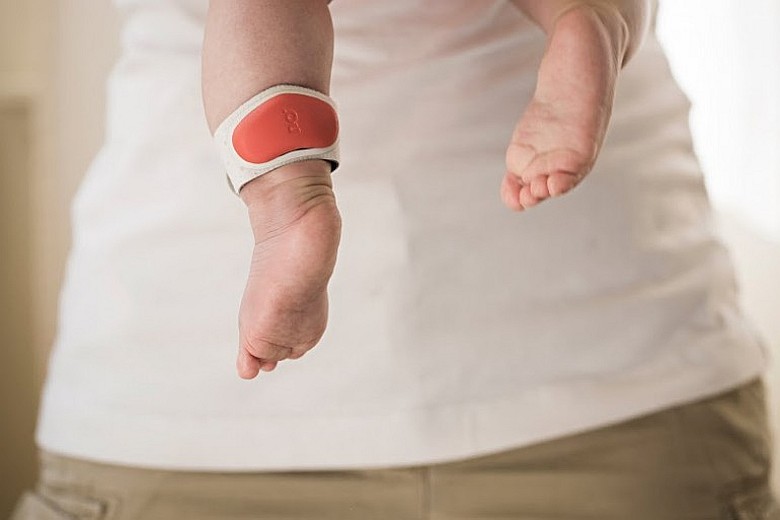

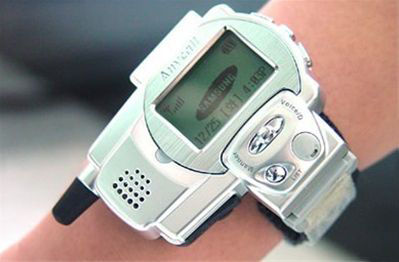
First of all, it should be said that there are “smart” glasses, and there are “virtual reality glasses”. Both of these options are related to wearable electronics.
')
Google Glass was, of course, far from being the first glasses able to show the user any information. Similar projects for athletes have been around for many years.
Take, for example, the HUD points presented in 2007. They have a LED display of 160x120 pixels, which should display statistics like heart rate, speed, and so on. Information should be transmitted from the "smart" watches in the kit. Unfortunately, the project did not reach the commercial implementation. Apparently, manufacturers are slightly ahead of time and did not fall into the trend.

And what about the topic of virtual reality glasses - so there were a lot of them. For example, Nintendo in 1994 introduced Virtual Boy, the source of sore eyes and necks in children and adults.
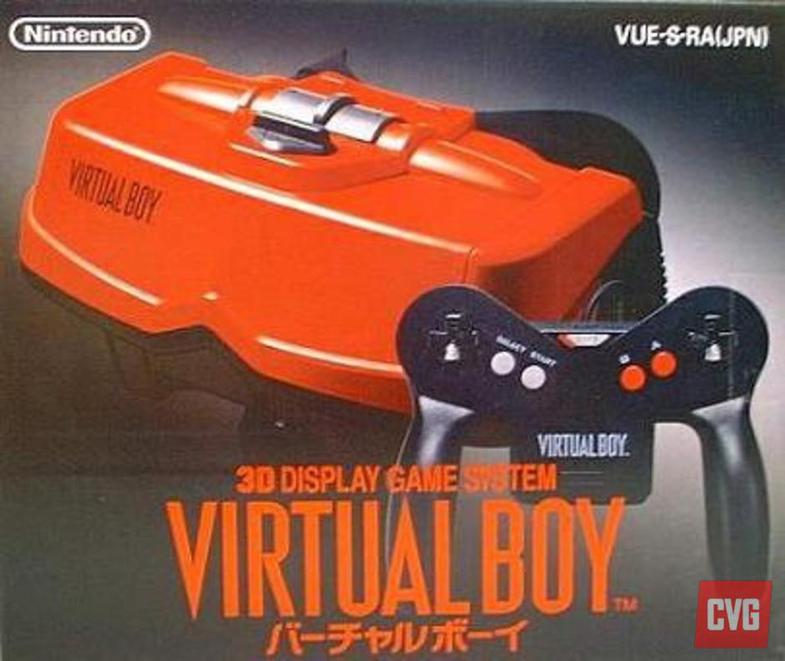
Johnny Mnemonic everyone remembers? The film showed quite a viable form factor of virtual reality glasses and bundled gloves that provide motion control .

And what is on sale? Or what is being prepared for release? There is no point in listing everything, so only a few projects will have to be mentioned.
This model is equipped with two translucent displays, which total 960x540 pixels. And the image that you see will be the same as a forty-inch TV from a distance of two and a half meters. The weight of the device is 88 grams, which is a bit much for glasses, but, given that the glasses are not quite normal, it can be acceptable.
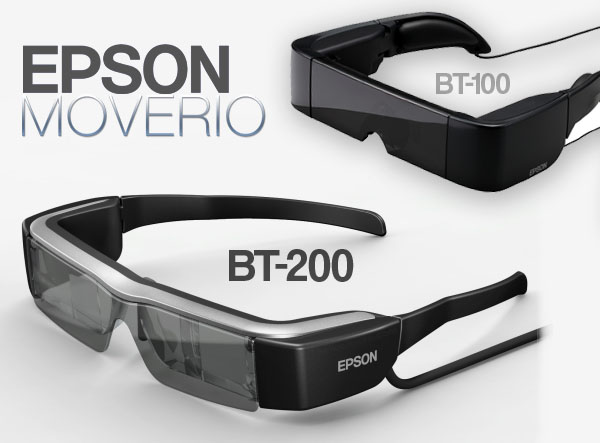

Another unusual format is a specialized motorcycle helmet . In a couple of weeks he will raise funds for Indiegogo, although now he has collected almost $ 1.5 million instead of the planned 250 thousand. So far, everything suggests that people really want and have been waiting for such a “smart” gadget for a long time.

But for Google Glass they are already trying to use them for medical purposes, and even in the police. The company has enough money to support the project for an arbitrarily long time, until there are large sales.
For example, glasses are used to help people with Parkinson's disease . Glasses remind you of taking medicine, or even that you need to “swallow saliva” or get out of the stupor inherent in those suffering from this disease.

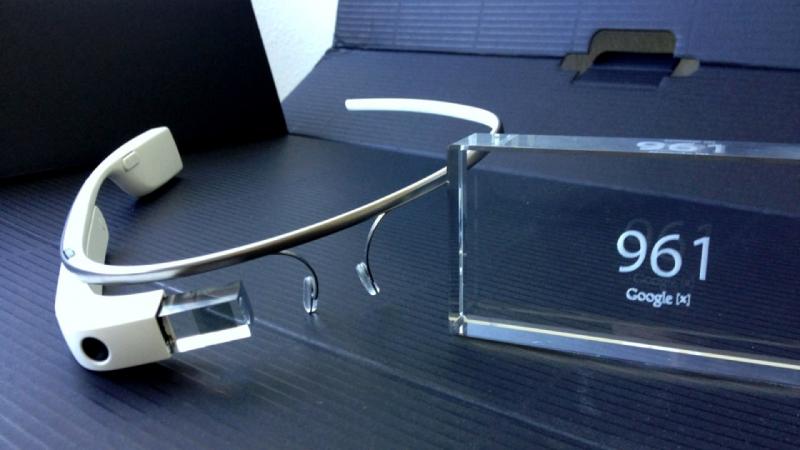
Smart glasses may not be so initially, but may be the result of adding some special device to them, as happened in the case of OrCam. This is a slightly different type: it is a system for people with vision problems. It can be said that “virtual vision” - glasses will help to recognize objects and faces, give various clues and help to read, informing about the printed text in the earpiece. In addition, the system remembers familiar places.

Speaking about glasses of virtual reality, it is impossible not to mention the Oculus Rift, which also appeared due to the support of Kickstarter. These 3D glasses have a resolution of 1280x800 pixels and a good viewing angle. In addition to playing the game, you can find other ways of useful use of points, for example, viewing apartments in the online planner.
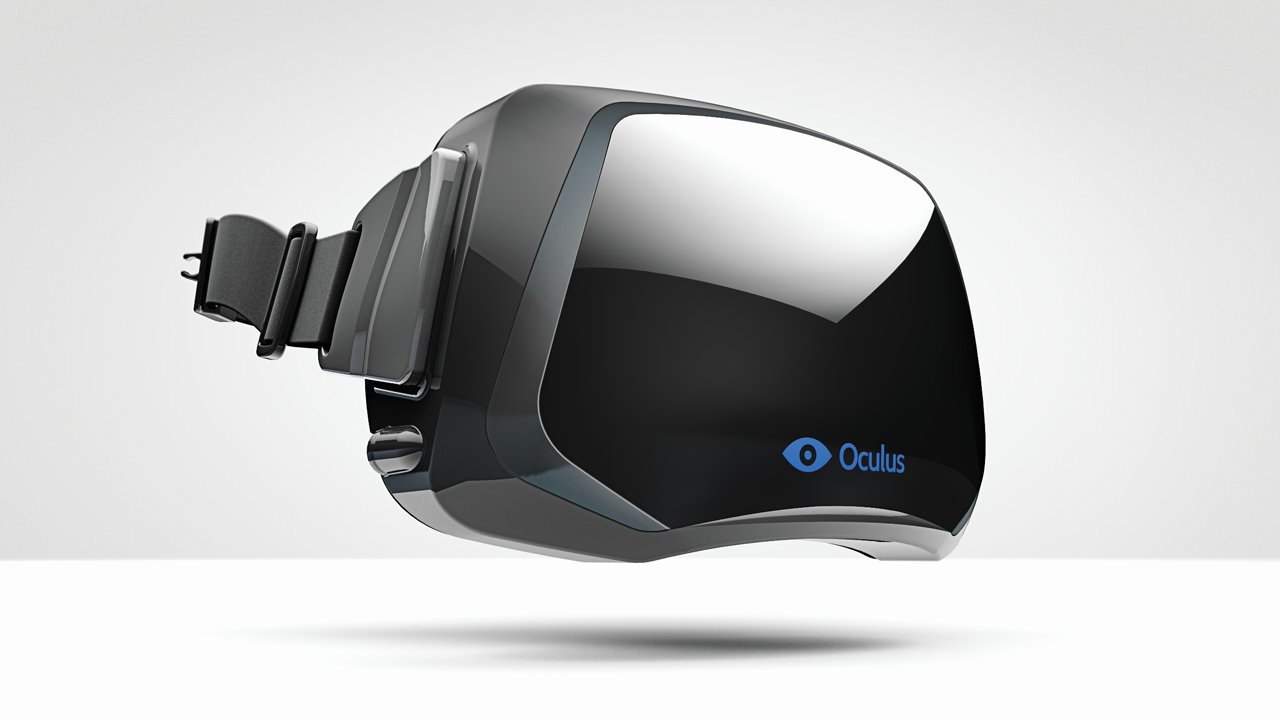
First, let's determine which watch is “smart”? Take the definition of “computerized wristwatches with enhanced functionality, except for standard time tracking.” In this case, watches with calculators, players and so on, which were quite a few in history, also fall into the “smart” category. We mention them in passing, because it is already possible to read in detail here on Habré.
Let's start in 1972, when the first electronic watch Pulsar appeared.
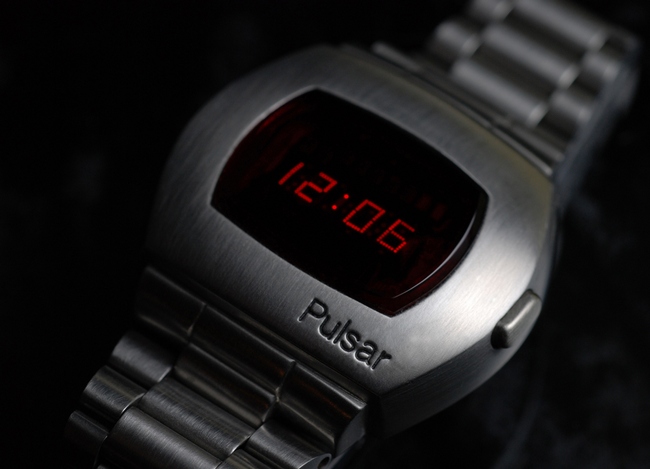
And in 1977, five years later, HP showed the world the HP-01 watch with a calculator. Price - from 650 to 850 dollars. Now it is about 2,600-3,400 dollars. True, the case was made of steel or gold - in five versions.

In 1984, a device appeared that was close to gadgets that synced with your smartphones - the RC-1000 Wrist Terminal allowed you to establish access to Apple, Commodore and IBM computers.
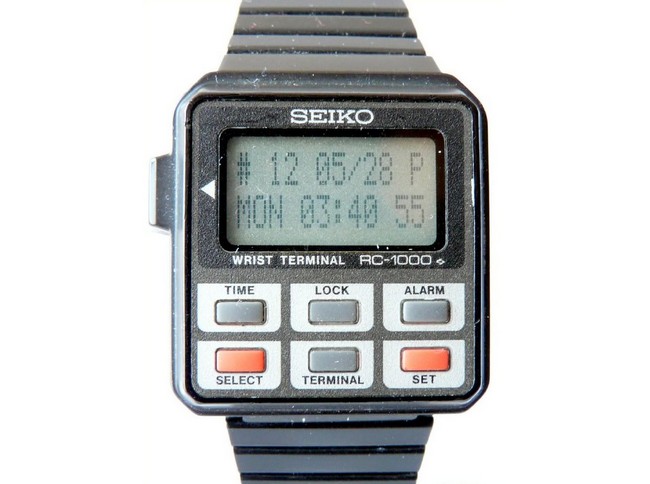
And one of the first attempts to make a watch with the ability to call was made in 1999 by Samsung. Now such a device is no surprise. Another question is, why is this necessary if there is a smartphone in your pocket?

While Apple has not yet released its own smart watch, Android remains the main operating system for such gadgets. Android Wear has now appeared - Google realized that it’s enough to mock the developers and make them redo this OS, and it’s better to release a standardized version for a specific segment.
As I said at the very beginning, in the first six months of this year, manufacturers shipped 6 million units. But it is not yet known how much was actually purchased.
Let's first talk about the leaders of the segment - Samsung, Pebble and Sony.
The company many times attempted to do something on the wearable gadget market, but for the most part was ahead of its time, so it was impossible to be proud of sales. Now the company is the leader according to Canalys, but only for shipping.
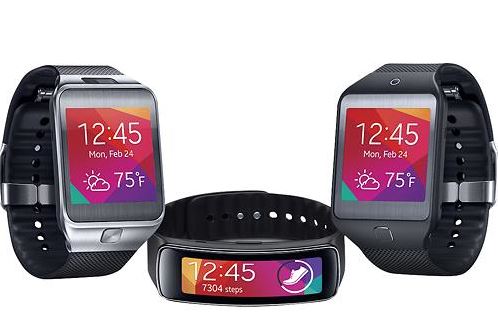
Also this year, the Gear Live watch, which uses Android Wear, was presented. Parameters can be viewed on this picture. I am glad that there is a heart rate monitor.
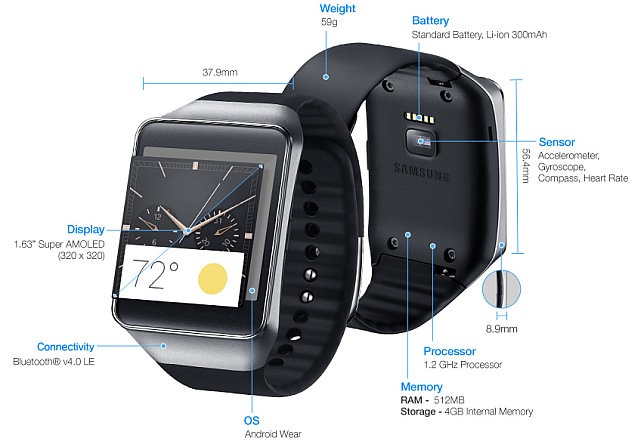
While preparing this post, Samsung showed another watch - Gear S. It is unusual here that there is a 3G and a slot for a sim card. So it will be possible to answer SMS directly from the clock.

In second place - Pebble. The manufacturer collected money on Kickstarter was able to spend it right, and in 2013, the buyers were able to get the first copies. They use their own operating system Pebble OS.
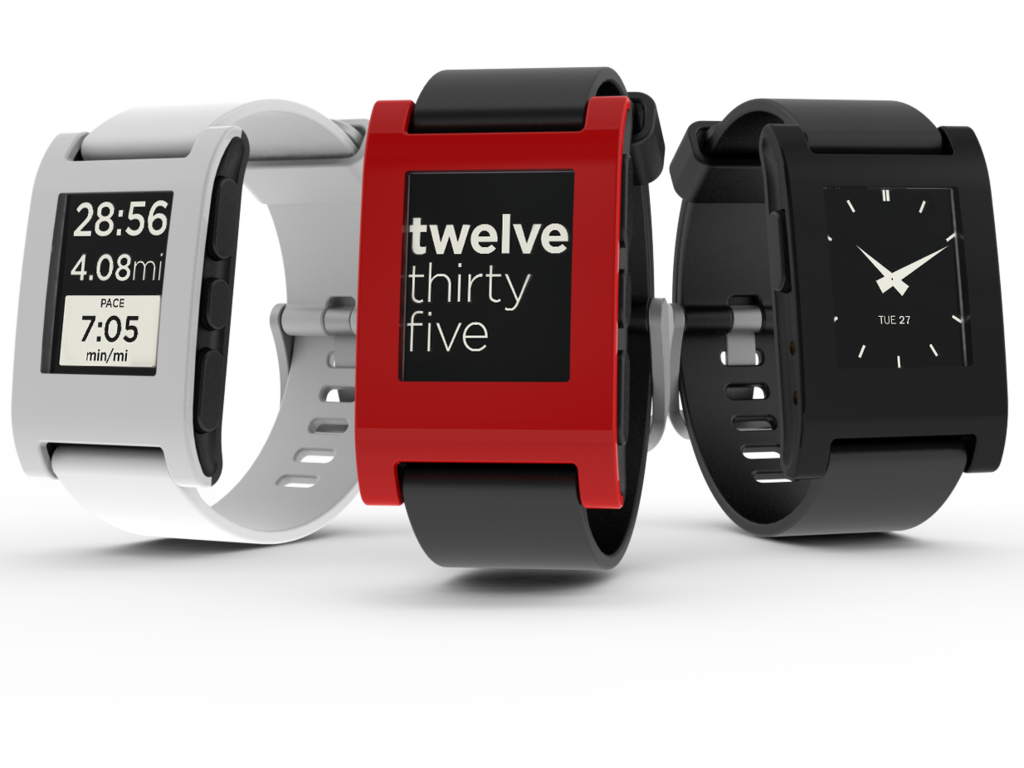
This year came out a new modification - Pebble Steel, which look much more stylish. Just because of the material used in the enclosure.
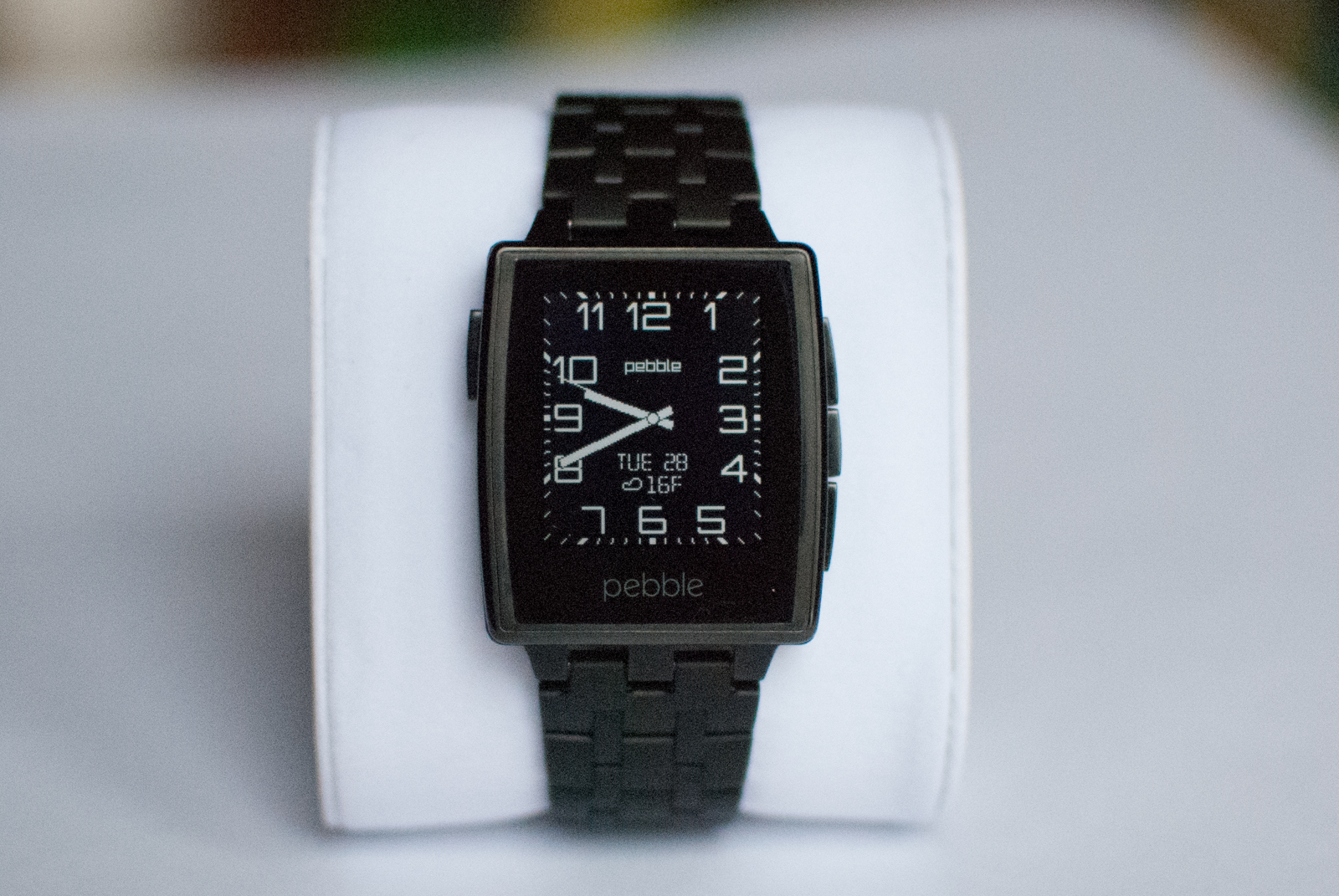
The clock will show incoming calls, email messages, calendar events, social network notifications and SMS messages. After pairing with a smartphone, Pebble will also allow you to control music, show driving speed and other data.
Sony has two lines in its arsenal - the SmartBand and the SmartWatch.
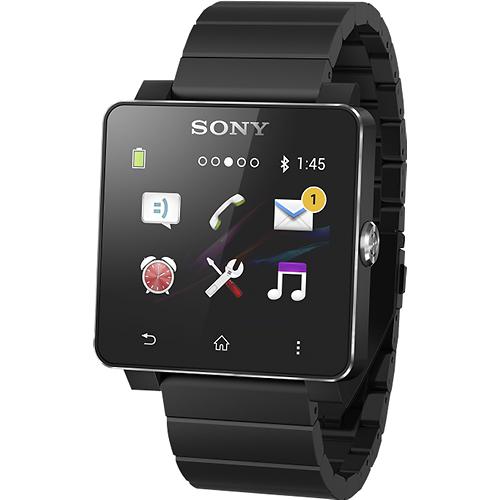
Sony SmartWatch 2 came out in 2013. They are equipped with NFC, Bluetooth 3.0 and a 1.6-inch touchscreen display with a resolution of 220x176 pixels. Of the benefits - protection from moisture and dust. The device is a “partner” of your smartphone, allows you to receive notifications and manage music.
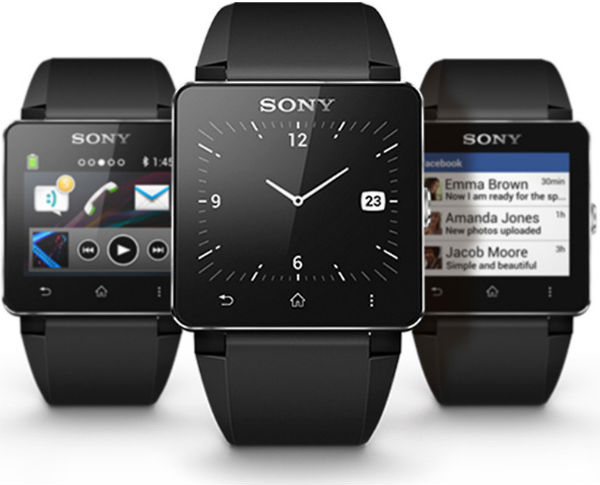
In September, the company will introduce SmartWatch 3, which is promised to get a completely new Android interface. 3G will not have to be content with Wi-Fi. Price and appearance have not yet disclosed.
If we talk about fitness trackers, then I think it’s worth starting with a brief excursion into the history of heart rate monitors. Why? Because it is, in my opinion, again, one of the main functions of a modern fitness tracker, although it is not present in each of them.
The fact is that an effective training of the heart occurs during physical exertion in the case when your pulse is in a certain interval. If I'm not mistaken, it is 110-140 beats per minute.
We owe the Polar company, opened in 1977 to create such gadgets for the Finnish ski team, to create an optical pulse sensor, the principle of which is used in most modern wearable gadgets with a heart rate monitor.
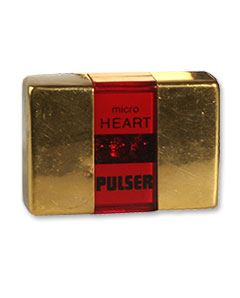
Four years later, the world's first sports smart watch Polar Sport Tester PE 2000 appeared. They had a heart monitor and an alarm clock. What else could you need in 1981 during training?
Over the years, the company has added other functions — for example, the same pedometer and compass, as well as the step length. In the latest Polar models, there is even a load prediction function to achieve specific goals, based on information collected about the user.
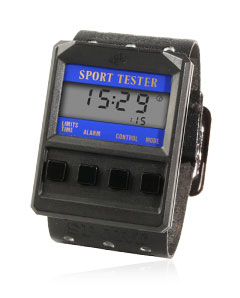
And how to make people buy and use bracelets now? Gamification comes to the rescue. You can compare different achievements with other users of similar devices.
A huge number of devices of this type does not allow you to physically write about all in one article, so the review will affect several gadgets of various types. We’ll talk about simple heart rate monitors - gadgets that only measure heart rate and have a couple more functions, as well as more complicated devices, with sleep tracking and smart alarm clocks, and gadgets that are equipped with displays that belong to the category of smart watches at the same time.
Pulsometers are of two types - with and without a chest sensor. In the second case, you just wear a bracelet or watch on your hand, which is much more convenient. If we talk about possible errors, a comparison of the Mio Alpha and the heart rate monitor with a chest strap showed that they are insignificant.
Heart Monitor Link can not even show you what your pulse. Because he has no display. But without a chest sensor, he will track the rhythm and send data to the smartphone, where you can view it using the application. It uses electro-optical technology.

Some devices simply transfer data to the smartphone, while others will show everything directly on the display in the design.
The activity tracker has an OLED display of 128x32 pixels, which allows you to increase the operating time on one battery charge to two weeks. The device measures the pulse and blood oxygen saturation, considers the calories burned, and also monitors the quality of sleep.

This unpretentious watch is also pleasing with its price - less than three thousand rubles, as well as an almost waterproof case - it will protect from rain.
That's just for the Russian winter, they are rather weak, since the working temperature range is from 0 to +40 degrees. The clock will remind you that it is time to get up and run. Or go at least. They also monitor sleep.
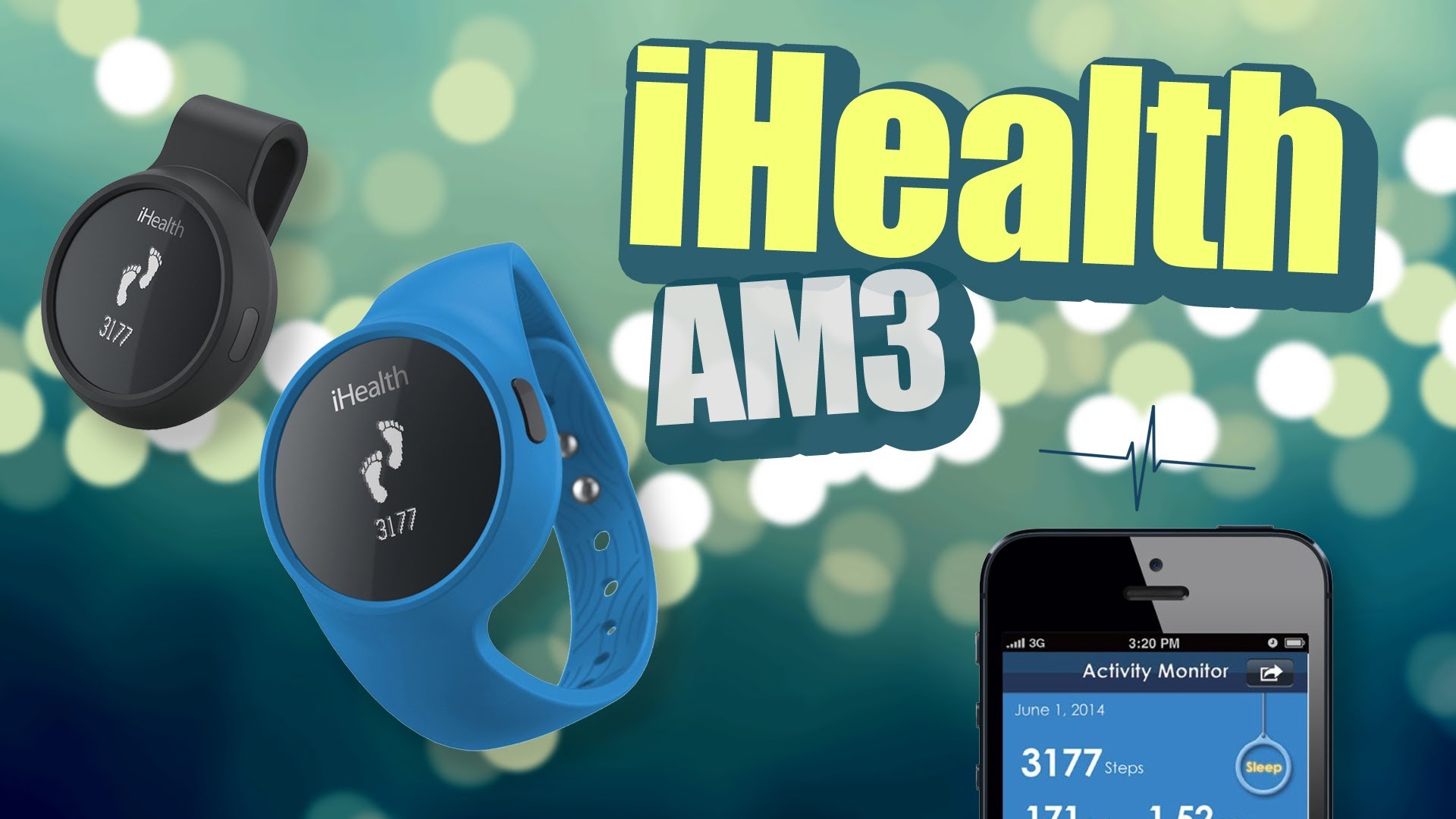
C Polar is much more complicated. This watch will tell you what the effect of training will be, give recommendations, will accurately calculate the number of calories burned. It is possible to manually set the target zone of the pulse - as I wrote above, to train the heart. In the set is a chest strap.
Also, the gadget will remember 99 workouts and help them analyze.
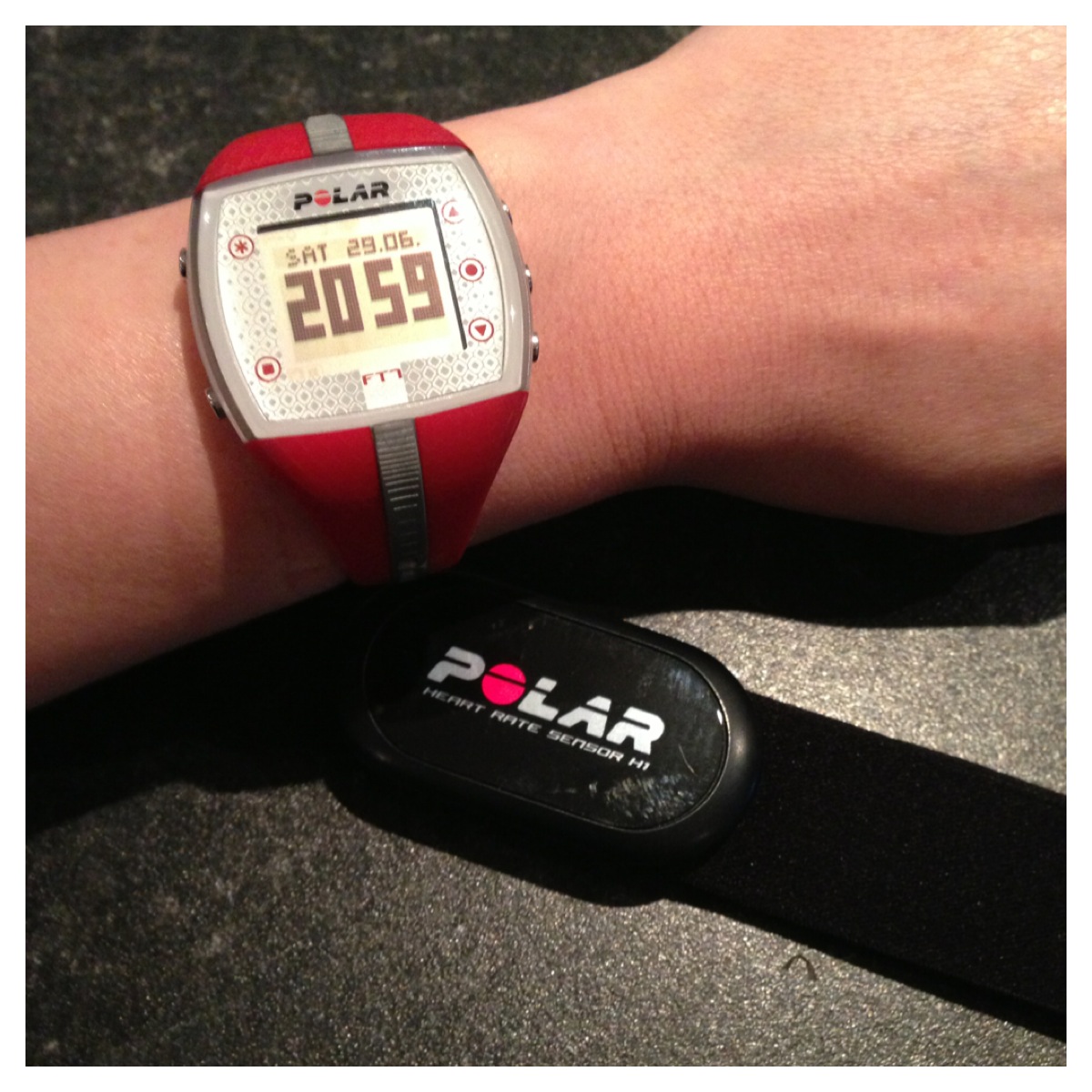
Keep up with high-tech companies and manufacturers of sportswear and accessories. Adidas, in its arsenal, has a miCoach Smart Run, capable of measuring heart rate, running pace, and equipped with GPS to record and save a route. Inside there are also three gigabytes of memory to the music.

Analytical Agency Canalys when calculating the shipped wearable devices divided them into two categories - “smart” and “basic”. In the case of “basic” devices, it was about fitness bracelets. Fitbit and Jawbone became the leaders here, so for a start I’ll tell you about their products, and after that - a few more examples.
Fitbit was created in 2007 to develop and manufacture wearable devices. Now under this brand the mass of devices in various form factors - from clothespins and bracelets to sports smart watches.
Last May, the Fitbit Flex bracelet was released. He watches his owner around the clock, even during sleep. The display consists of five LEDs, which show the number of steps completed, and with the help of vibration notify about the achieved goals.

Jawbone has two products from the fitness tracker segment: UP and UP24. In the first case, to transfer data, you need to connect the bracelet to the smartphone via the headphone jack, in the second, the bracelet is synchronized with the smartphone via Bluetooth, which is convenient.
I went for a while with a Jawbone UP24 bracelet. The thing is interesting, gamification is well done, but still annoying the lack of a heart rate monitor. But still, such a bracelet can be bought only because of an alarm clock: I have experienced it myself - it wakes up at the right moment, without disturbing my relatives. With a small child is just a necessary thing.

Another option from MIO is Fuse. He also does not need a chest sensor. The LED display will show the heart rate when the button is pressed. In addition, he will calculate the distance traveled and calories burned.
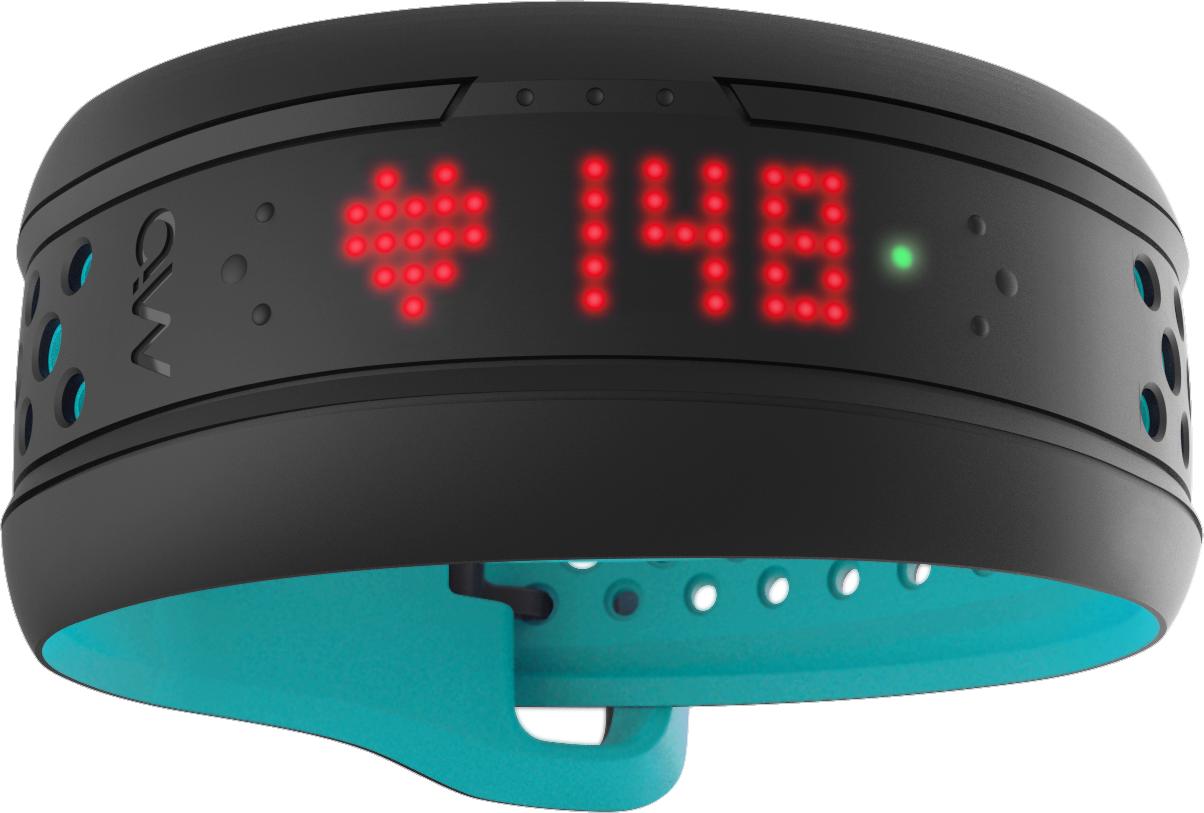
The fitness tracker in the form of a tablet can be worn on the arm or on the neck, or as a brooch on clothes, for which special accessories are used. Shine dimensions are 27.7 mm in diameter and 3.3 mm in thickness.
All management is done from a smartphone. You set a goal - how much do you want to swim or run in a day, and then reach it.
In addition, the gadget will follow your sleep.

This is a gadget in the form factor of classic clothespins. But it can be worn on the arm, using a special bandage from the kit. He will also count the steps and follow the implementation of the goal, thereby helping to stay in shape.
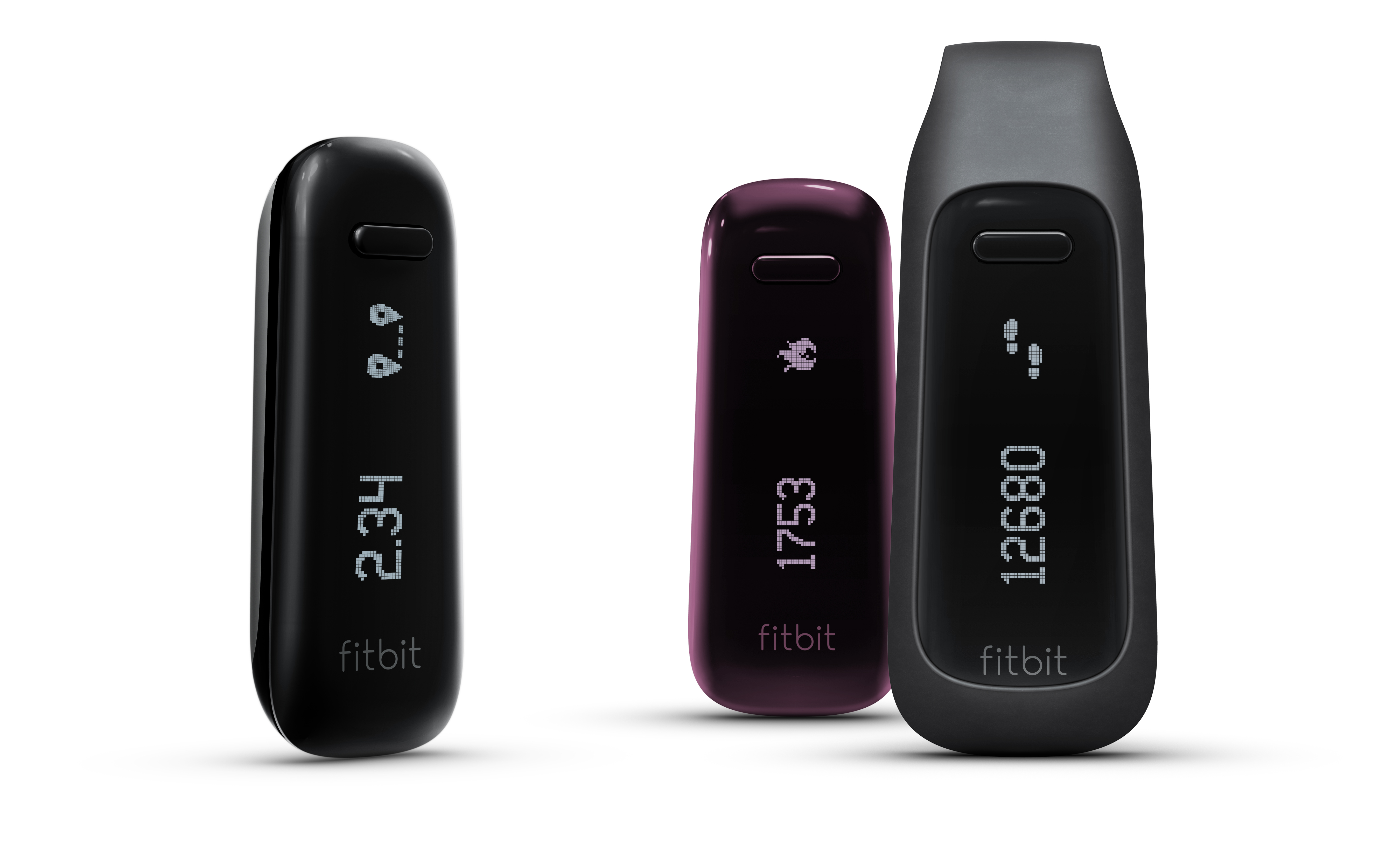
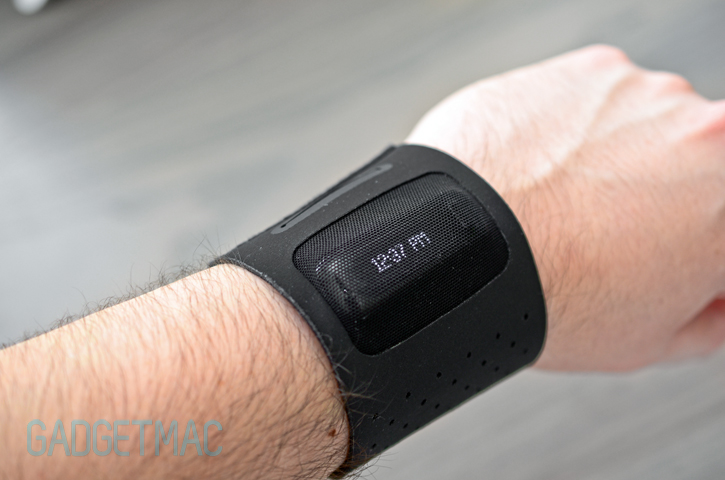
Another pedometer is Withings Pulse. And this gadget, again, can be hooked on the pants, and on the arm with a special bracelet to pull. He monitors sleep, measures pulse and counts calories burned. One of the advantages - the manufacturer promises to work without recharging for up to two weeks.

Distinguished company-manufacturer of clothing Ralph Lauren has repeatedly taken up the development of "smart" clothing. There were already jackets for skiers with MP3 players, for example. This summer, the manufacturer showed a T-shirt that can count the steps, monitor the heartbeat, blood oxygen saturation, and so on. All information will be available on the smartphone screen. The next step will be the release of a shirt with the same features.

Will you wear a t-shirt with such a bloom? It doesn’t look as cool as Iron Man’s suit, of course, but it’s quite functional. The platform from the Spanish company Nuubo includes a T-shirt with textile electrodes that read ECG, a wireless receiver of information and an analysis and visualization program, the results of which you will already see on your smartphone.
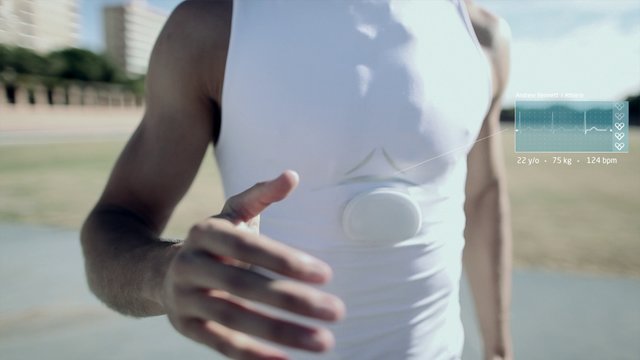
Of course, the fashion for wearable gadgets has spread to children. In addition, for a long time in the shops there are toys that imitate all sorts of superhero or spy watches or glasses. So why don't these devices become real? You can read more about children's gadgets in this article , and now - briefly about them.
Bracelets such as KidFit and Leapband are designed for different ages. If the second option is liked by the smallest, from 4 to 7 years old, then the first one looks just like an adult gadget. Gamification is set appropriately - Leapband allows you to spend "rammed" points for the purchase of little animals.
In the case of KidFit, the parents themselves set tasks for the child.

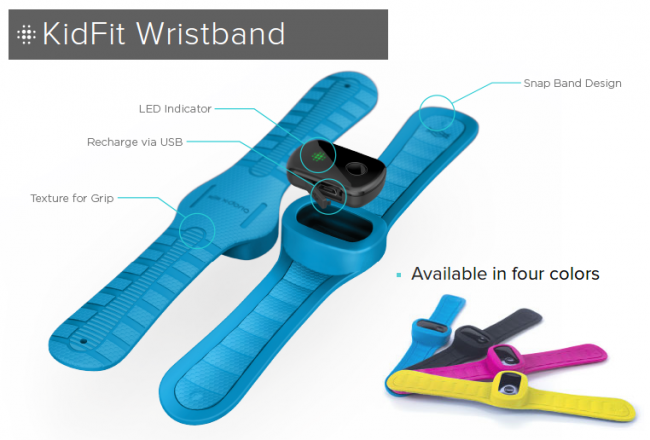
The iSwimband device sends signals to the smartphone to parents if the sensor is under water for some time. It may not be the best and most convenient, but still a way to protect children while relaxing at the seaside or at the swimming pool.
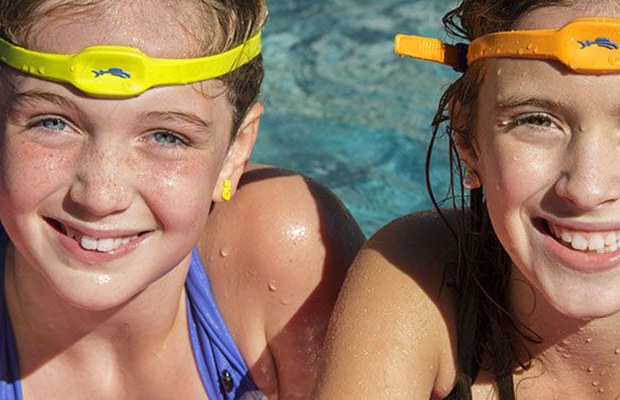
A little more widely specialized device LG KizON will help determine where your baby is.
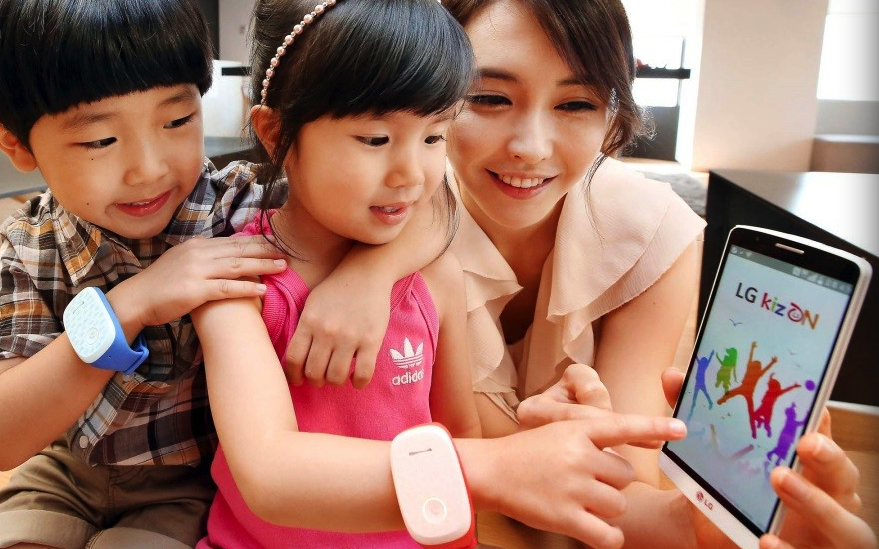
Sproutling is a complete health tracker for the youngest, in terms of very babies. This thing on the leg with the “base” determines 17 parameters, including pulse and air temperature in the room. In my opinion - the development is excellent, except for one “but”: for a long time I would not leave the bracelet on the baby’s leg. But this is already particular, nothing prevents you from putting on for half an hour several times a day or in special cases, for example after vaccination, when you definitely need to monitor the temperature of the baby.

Large companies are lucky: Google and Samsung have the opportunity to experiment, keeping projects afloat even in case of failures. And smaller producers like Pebble have to “shoot” only once and hope to hit the target. Pebble was lucky, but many of the gadgets from those that once received funding for Kickstarter or Indiegogo, will not be able to see the light. Wearable electronics can not yet be in sales with smartphones. If during the first six months of 2014, 300 million mobile phones were sold, then only 6 million smart watches and bracelets were shipped. But this figure, according to analysts, will steadily grow.
In this post we will talk about various wearable devices, including fitness bracelets, “smart” watches and glasses, as well as special gadgets for children.



Smart glasses
First of all, it should be said that there are “smart” glasses, and there are “virtual reality glasses”. Both of these options are related to wearable electronics.
')
Google Glass was, of course, far from being the first glasses able to show the user any information. Similar projects for athletes have been around for many years.
Take, for example, the HUD points presented in 2007. They have a LED display of 160x120 pixels, which should display statistics like heart rate, speed, and so on. Information should be transmitted from the "smart" watches in the kit. Unfortunately, the project did not reach the commercial implementation. Apparently, manufacturers are slightly ahead of time and did not fall into the trend.

And what about the topic of virtual reality glasses - so there were a lot of them. For example, Nintendo in 1994 introduced Virtual Boy, the source of sore eyes and necks in children and adults.

Johnny Mnemonic everyone remembers? The film showed quite a viable form factor of virtual reality glasses and bundled gloves that provide motion control .

And what is on sale? Or what is being prepared for release? There is no point in listing everything, so only a few projects will have to be mentioned.
Epson Moverio BT-200
This model is equipped with two translucent displays, which total 960x540 pixels. And the image that you see will be the same as a forty-inch TV from a distance of two and a half meters. The weight of the device is 88 grams, which is a bit much for glasses, but, given that the glasses are not quite normal, it can be acceptable.


Another unusual format is a specialized motorcycle helmet . In a couple of weeks he will raise funds for Indiegogo, although now he has collected almost $ 1.5 million instead of the planned 250 thousand. So far, everything suggests that people really want and have been waiting for such a “smart” gadget for a long time.

But for Google Glass they are already trying to use them for medical purposes, and even in the police. The company has enough money to support the project for an arbitrarily long time, until there are large sales.
For example, glasses are used to help people with Parkinson's disease . Glasses remind you of taking medicine, or even that you need to “swallow saliva” or get out of the stupor inherent in those suffering from this disease.


Smart glasses may not be so initially, but may be the result of adding some special device to them, as happened in the case of OrCam. This is a slightly different type: it is a system for people with vision problems. It can be said that “virtual vision” - glasses will help to recognize objects and faces, give various clues and help to read, informing about the printed text in the earpiece. In addition, the system remembers familiar places.

Speaking about glasses of virtual reality, it is impossible not to mention the Oculus Rift, which also appeared due to the support of Kickstarter. These 3D glasses have a resolution of 1280x800 pixels and a good viewing angle. In addition to playing the game, you can find other ways of useful use of points, for example, viewing apartments in the online planner.

Smart watch
First, let's determine which watch is “smart”? Take the definition of “computerized wristwatches with enhanced functionality, except for standard time tracking.” In this case, watches with calculators, players and so on, which were quite a few in history, also fall into the “smart” category. We mention them in passing, because it is already possible to read in detail here on Habré.
Let's start in 1972, when the first electronic watch Pulsar appeared.

And in 1977, five years later, HP showed the world the HP-01 watch with a calculator. Price - from 650 to 850 dollars. Now it is about 2,600-3,400 dollars. True, the case was made of steel or gold - in five versions.

In 1984, a device appeared that was close to gadgets that synced with your smartphones - the RC-1000 Wrist Terminal allowed you to establish access to Apple, Commodore and IBM computers.

And one of the first attempts to make a watch with the ability to call was made in 1999 by Samsung. Now such a device is no surprise. Another question is, why is this necessary if there is a smartphone in your pocket?

While Apple has not yet released its own smart watch, Android remains the main operating system for such gadgets. Android Wear has now appeared - Google realized that it’s enough to mock the developers and make them redo this OS, and it’s better to release a standardized version for a specific segment.
As I said at the very beginning, in the first six months of this year, manufacturers shipped 6 million units. But it is not yet known how much was actually purchased.
Let's first talk about the leaders of the segment - Samsung, Pebble and Sony.
Samsung
The company many times attempted to do something on the wearable gadget market, but for the most part was ahead of its time, so it was impossible to be proud of sales. Now the company is the leader according to Canalys, but only for shipping.

Also this year, the Gear Live watch, which uses Android Wear, was presented. Parameters can be viewed on this picture. I am glad that there is a heart rate monitor.

While preparing this post, Samsung showed another watch - Gear S. It is unusual here that there is a 3G and a slot for a sim card. So it will be possible to answer SMS directly from the clock.

PEBBLE SMARTWATCH
In second place - Pebble. The manufacturer collected money on Kickstarter was able to spend it right, and in 2013, the buyers were able to get the first copies. They use their own operating system Pebble OS.

This year came out a new modification - Pebble Steel, which look much more stylish. Just because of the material used in the enclosure.

The clock will show incoming calls, email messages, calendar events, social network notifications and SMS messages. After pairing with a smartphone, Pebble will also allow you to control music, show driving speed and other data.
Sony
Sony has two lines in its arsenal - the SmartBand and the SmartWatch.

Sony SmartWatch 2 came out in 2013. They are equipped with NFC, Bluetooth 3.0 and a 1.6-inch touchscreen display with a resolution of 220x176 pixels. Of the benefits - protection from moisture and dust. The device is a “partner” of your smartphone, allows you to receive notifications and manage music.

In September, the company will introduce SmartWatch 3, which is promised to get a completely new Android interface. 3G will not have to be content with Wi-Fi. Price and appearance have not yet disclosed.
Fitness trackers
If we talk about fitness trackers, then I think it’s worth starting with a brief excursion into the history of heart rate monitors. Why? Because it is, in my opinion, again, one of the main functions of a modern fitness tracker, although it is not present in each of them.
The fact is that an effective training of the heart occurs during physical exertion in the case when your pulse is in a certain interval. If I'm not mistaken, it is 110-140 beats per minute.
We owe the Polar company, opened in 1977 to create such gadgets for the Finnish ski team, to create an optical pulse sensor, the principle of which is used in most modern wearable gadgets with a heart rate monitor.

Four years later, the world's first sports smart watch Polar Sport Tester PE 2000 appeared. They had a heart monitor and an alarm clock. What else could you need in 1981 during training?
Over the years, the company has added other functions — for example, the same pedometer and compass, as well as the step length. In the latest Polar models, there is even a load prediction function to achieve specific goals, based on information collected about the user.

And how to make people buy and use bracelets now? Gamification comes to the rescue. You can compare different achievements with other users of similar devices.
A huge number of devices of this type does not allow you to physically write about all in one article, so the review will affect several gadgets of various types. We’ll talk about simple heart rate monitors - gadgets that only measure heart rate and have a couple more functions, as well as more complicated devices, with sleep tracking and smart alarm clocks, and gadgets that are equipped with displays that belong to the category of smart watches at the same time.
Simple heart rate monitor
Pulsometers are of two types - with and without a chest sensor. In the second case, you just wear a bracelet or watch on your hand, which is much more convenient. If we talk about possible errors, a comparison of the Mio Alpha and the heart rate monitor with a chest strap showed that they are insignificant.
MIO Link
Heart Monitor Link can not even show you what your pulse. Because he has no display. But without a chest sensor, he will track the rhythm and send data to the smartphone, where you can view it using the application. It uses electro-optical technology.

Display trackers
Some devices simply transfer data to the smartphone, while others will show everything directly on the display in the design.
WITHINGS PULSE O2
The activity tracker has an OLED display of 128x32 pixels, which allows you to increase the operating time on one battery charge to two weeks. The device measures the pulse and blood oxygen saturation, considers the calories burned, and also monitors the quality of sleep.

IHEALTH AM3
This unpretentious watch is also pleasing with its price - less than three thousand rubles, as well as an almost waterproof case - it will protect from rain.
That's just for the Russian winter, they are rather weak, since the working temperature range is from 0 to +40 degrees. The clock will remind you that it is time to get up and run. Or go at least. They also monitor sleep.

POLAR FT7
C Polar is much more complicated. This watch will tell you what the effect of training will be, give recommendations, will accurately calculate the number of calories burned. It is possible to manually set the target zone of the pulse - as I wrote above, to train the heart. In the set is a chest strap.
Also, the gadget will remember 99 workouts and help them analyze.

Adidas
Keep up with high-tech companies and manufacturers of sportswear and accessories. Adidas, in its arsenal, has a miCoach Smart Run, capable of measuring heart rate, running pace, and equipped with GPS to record and save a route. Inside there are also three gigabytes of memory to the music.

Bracelets
Analytical Agency Canalys when calculating the shipped wearable devices divided them into two categories - “smart” and “basic”. In the case of “basic” devices, it was about fitness bracelets. Fitbit and Jawbone became the leaders here, so for a start I’ll tell you about their products, and after that - a few more examples.
Fitbit
Fitbit was created in 2007 to develop and manufacture wearable devices. Now under this brand the mass of devices in various form factors - from clothespins and bracelets to sports smart watches.
Last May, the Fitbit Flex bracelet was released. He watches his owner around the clock, even during sleep. The display consists of five LEDs, which show the number of steps completed, and with the help of vibration notify about the achieved goals.

Jawbone UP24
Jawbone has two products from the fitness tracker segment: UP and UP24. In the first case, to transfer data, you need to connect the bracelet to the smartphone via the headphone jack, in the second, the bracelet is synchronized with the smartphone via Bluetooth, which is convenient.
I went for a while with a Jawbone UP24 bracelet. The thing is interesting, gamification is well done, but still annoying the lack of a heart rate monitor. But still, such a bracelet can be bought only because of an alarm clock: I have experienced it myself - it wakes up at the right moment, without disturbing my relatives. With a small child is just a necessary thing.

MIO Fuse
Another option from MIO is Fuse. He also does not need a chest sensor. The LED display will show the heart rate when the button is pressed. In addition, he will calculate the distance traveled and calories burned.

Other form factors
Misfit shine
The fitness tracker in the form of a tablet can be worn on the arm or on the neck, or as a brooch on clothes, for which special accessories are used. Shine dimensions are 27.7 mm in diameter and 3.3 mm in thickness.
All management is done from a smartphone. You set a goal - how much do you want to swim or run in a day, and then reach it.
In addition, the gadget will follow your sleep.

Fitbit one
This is a gadget in the form factor of classic clothespins. But it can be worn on the arm, using a special bandage from the kit. He will also count the steps and follow the implementation of the goal, thereby helping to stay in shape.


Withings pulse
Another pedometer is Withings Pulse. And this gadget, again, can be hooked on the pants, and on the arm with a special bracelet to pull. He monitors sleep, measures pulse and counts calories burned. One of the advantages - the manufacturer promises to work without recharging for up to two weeks.

clothing
Ralph lauren
Distinguished company-manufacturer of clothing Ralph Lauren has repeatedly taken up the development of "smart" clothing. There were already jackets for skiers with MP3 players, for example. This summer, the manufacturer showed a T-shirt that can count the steps, monitor the heartbeat, blood oxygen saturation, and so on. All information will be available on the smartphone screen. The next step will be the release of a shirt with the same features.

Nuubo
Will you wear a t-shirt with such a bloom? It doesn’t look as cool as Iron Man’s suit, of course, but it’s quite functional. The platform from the Spanish company Nuubo includes a T-shirt with textile electrodes that read ECG, a wireless receiver of information and an analysis and visualization program, the results of which you will already see on your smartphone.

Kids Gadgets
Of course, the fashion for wearable gadgets has spread to children. In addition, for a long time in the shops there are toys that imitate all sorts of superhero or spy watches or glasses. So why don't these devices become real? You can read more about children's gadgets in this article , and now - briefly about them.
Fitness trackers for kids
Bracelets such as KidFit and Leapband are designed for different ages. If the second option is liked by the smallest, from 4 to 7 years old, then the first one looks just like an adult gadget. Gamification is set appropriately - Leapband allows you to spend "rammed" points for the purchase of little animals.
In the case of KidFit, the parents themselves set tasks for the child.


Security
The iSwimband device sends signals to the smartphone to parents if the sensor is under water for some time. It may not be the best and most convenient, but still a way to protect children while relaxing at the seaside or at the swimming pool.

A little more widely specialized device LG KizON will help determine where your baby is.

Health
Sproutling is a complete health tracker for the youngest, in terms of very babies. This thing on the leg with the “base” determines 17 parameters, including pulse and air temperature in the room. In my opinion - the development is excellent, except for one “but”: for a long time I would not leave the bracelet on the baby’s leg. But this is already particular, nothing prevents you from putting on for half an hour several times a day or in special cases, for example after vaccination, when you definitely need to monitor the temperature of the baby.

Total
Large companies are lucky: Google and Samsung have the opportunity to experiment, keeping projects afloat even in case of failures. And smaller producers like Pebble have to “shoot” only once and hope to hit the target. Pebble was lucky, but many of the gadgets from those that once received funding for Kickstarter or Indiegogo, will not be able to see the light. Wearable electronics can not yet be in sales with smartphones. If during the first six months of 2014, 300 million mobile phones were sold, then only 6 million smart watches and bracelets were shipped. But this figure, according to analysts, will steadily grow.
Source: https://habr.com/ru/post/235293/
All Articles